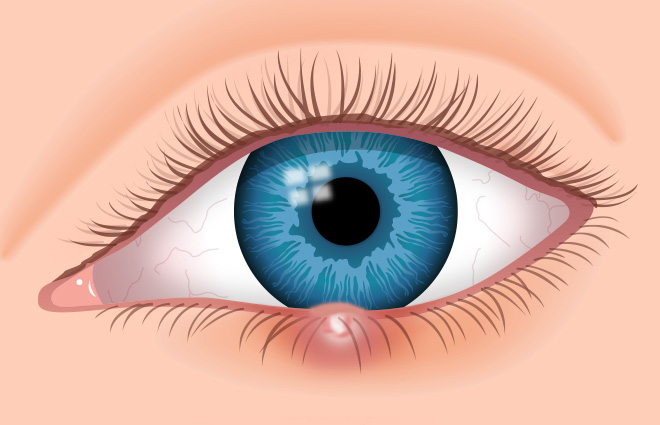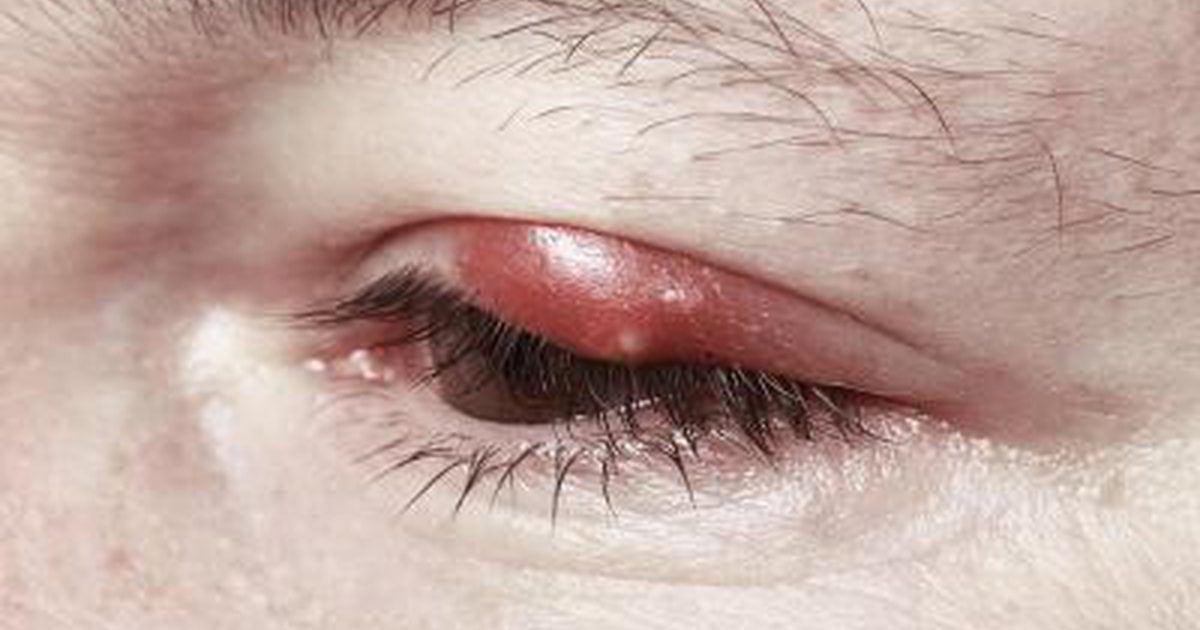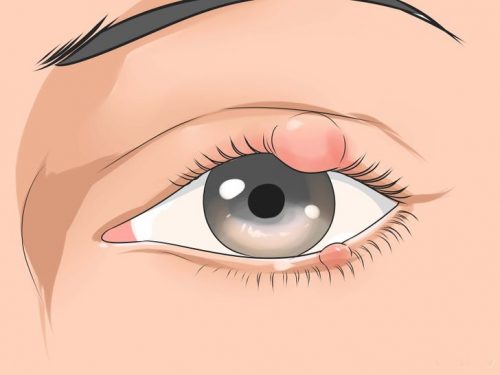Chalazion
The term “chalazion” is derived from a Greek word meaning “small swelling”, caused by chronic inflammation of small meibomian glands located in the upper and lower eyelids. This cystic swelling is a small lump beneath the eyelid skin, created as a result of the obstruction of the duct and accumulation of secreted substances in the glands. Chalazion is usually an inflammatory reaction to trapped fatty secretions, and the bacteria do not play a role in it, although it may secondarily lead to bacterial infection.

Chalazion commences with painless swelling on the eyelid, which may be associated with redness. These symptoms disappear after a few days, and leave only one painless lump on the eyelid. In some cases, chalazion enlargement incurs pressure on the eye and causes decreased vision and astigmatism.
Chalazion treatment
Small and asymptomatic chalazions may recover by themselves, though they may not be improved without treatment in most cases. Antibiotics are not used in the treatment of this disease, considering that the infectious agent does not play a role in the development of chalazion. The warm compress is the main treatment that is used in a variety of ways. The easiest way is to put a clean towel wetted with warm water on the closed eyelid 3 to 4 times a day (each time for 5-10 minutes). Massaging the eyelid along its edge with warm towel or finger tips accelerates the recovery process.
The use of surgery to treat chalazion is inevitable in resistant cases. Surgery is done inside the internal part of the eyelid which needs no suture.
Chalazion responds well to treatment. People with a blepharitis background are prone to chalazion recurrence, in which cases, long-term observance of the hygiene edges of the eyelids is recommended. A frequent surgery to treat chalazion causes lacrimal disorders and other problems and should be avoided. In order to investigate more serious problems, biopsy in repeated cases of chalazion in a particular area, especially in the elderly, is recommended.

Sty
It is the acute inflammatory infection of the eyelash follicles that causes painful red swelling near the edge of the eyelid and may be confused with chalazion. Sty is healed in most cases within a week. Sty is commonly created in the outer part of the eyelids, but sometimes also engages the inner eyelids part.
Using warm compress in the first days, in addition to pain relief, opens the sty and leads to purulent discharge. Considering the presence of microbial agents in this disease, the use of antibiotic drops is recommended. Similar to chalazion, observing the hygiene of the edges of the eyelids plays a crucial role in preventing such disease.

Chalazion treatment
Small and asymptomatic chalazions may recover by themselves, though they may not be improved without treatment in most cases. Antibiotics are not used in the treatment of this disease, considering that the infectious agent does not play a role in the development of chalazion. The warm compress is the main treatment that is used in a variety of ways. The easiest way is to put a clean towel wetted with warm water on the closed eyelid 3 to 4 times a day (each time for 5-10 minutes). Massaging the eyelid along its edge with warm towel or finger tips accelerates the recovery process.
The use of surgery to treat chalazion is inevitable in resistant cases. Surgery is done inside the internal part of the eyelid which needs no suture.
Chalazion responds well to treatment. People with a blepharitis background are prone to chalazion recurrence, in which cases, long-term observance of the hygiene edges of the eyelids is recommended. A frequent surgery to treat chalazion causes lacrimal disorders and other problems and should be avoided. In order to investigate more serious problems, biopsy in repeated cases of chalazion in a particular area, especially in the elderly, is recommended.
